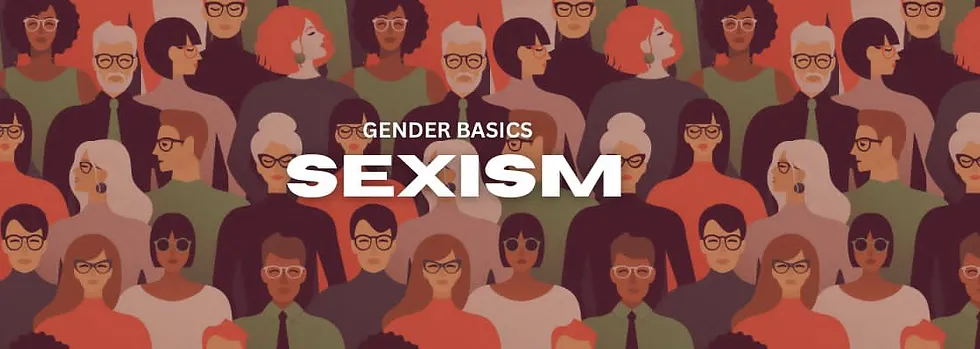Comedian Jerry Lewis once expressed the opinion that women are bad at comedy. This is not an uncommon complaint, especially from men, and is the perfect everyday example of sexism. Simply, sexism is any prejudice or discrimination on the basis of sex or gender. Let us unpack these components individually:
- Sexist prejudice is a preconceived idea or opinion about a particular sex or gender. These arise from social messages about sex and gender, and power structures like the patriarchy, rather than from logic or real experience.
Ex. The idea that women are bad at comedy. Sexist discrimination is the unjust treatment of members of a particular sex or gender. Discriminative behaviours, customs, and policies are a result of prejudice.
Ex. Denying a female comedian the opportunity to audition for a show due to the (prejudicial) belief that women are bad at comedy.
Gender roles, norms, and stereotypes often comprise the roots of sexism. These are widespread ideas about what members of a particular sex or gender ought or tend to be like, and these ideas shape traditional masculinity and femininity. In other words, they are social messages about sex and gender. To continue the example of women in comedy, some people who believe women are bad at comedy may find it unpleasant when female comedians behave in vulgar or aggressive ways or poke fun at others openly, because such behaviour defies norms that characterise women as chaste, gentle, polite, etc. Other people may think women are simply incapable of defying these norms – they stereotype women as too serious, sensitive, or uptight to be good comedians. In fact, most sexist prejudice (which leads to sexist discrimination) is grounded in a belief in a gender role, norm, or stereotype.
Gender Roles, Norms, and Stereotypes: Widespread ideas/social messages about sex and gender that shape traditional masculinity and femininity.
Ex. Women are/should be soft-spoken, civil, and ‘ladylike’, never loud or abrasive. )
↓
Sexist Prejudice: Preconceived ideas and opinions, influenced by a belief in gender roles, norms, and stereotypes.
Ex. Women make bad comedians because they don’t know how to (alternatively: shouldn’t) be loud and abrasive.
↓
Sexist Discrimination: Unjust treatment based on prejudice.
Ex. I don’t want to audition this female comedian for my show because women make bad comedians.
Sexism towards women can be hostile or benevolent based on whether the sentiment behind it is negative or positive:
- Hostile sexism has a negative sentiment. It may frame women as manipulative, deceitful, irritating, superficial, overemotional, etc., or suggest that they are sexual objects undeserving of dignity or respect Ex. Saying women shouldn’t be in positions of leadership because they are more emotional than they are ‘logical’ so cannot properly exercise power.
- Benevolent sexism has a positive sentiment. It may frame women as delicate, chaste, nurturing, vulnerable, desirable, etc. This view of women forces traditional femininity on them and advocates for them to remain submissive to me Ex. Glorifying women’s ‘natural’ ability to care and nurture in order to argue that it is their ‘duty’ to be wives and mothers.
- It is social messages about sex and gender, i.e. gender roles, norms, and stereotypes, and the patriarchy that cause sexism, and
- Sexism in turn reinforces these gender roles and upholds the patriarchy.





